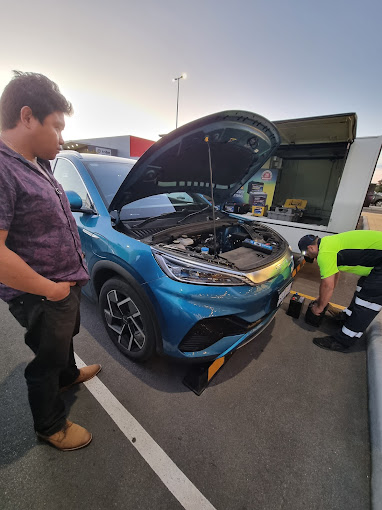
Jump starting a car with a flat battery is a common roadside procedure, but if done incorrectly, it can damage your vehicle's electrical system or even cause injury. This guide will walk you through the safe, correct procedure for jump starting while highlighting common mistakes to avoid.
Safety Warning
Jump starting creates sparks that could ignite battery gases. If you notice a rotten egg smell, visible damage to the battery, or the battery is frozen, DO NOT attempt to jump start. Call a professional instead.
What You'll Need
- Jumper cables (high-quality, thick cables are best)
- A car with a good battery
- Safety gloves and eye protection (recommended)
The Correct Jump Starting Procedure
Step 1: Prepare Both Vehicles
Position the cars close enough for the jumper cables to reach both batteries, but ensure they aren't touching. Turn off both engines and all electrical components (lights, radio, air conditioning, etc.). Apply the parking brakes and put both vehicles in "Park" (automatic) or "Neutral" (manual).
Step 2: Connect the Jumper Cables in the Correct Order
- Connect one RED clamp to the positive (+) terminal of the dead battery
- Connect the other RED clamp to the positive (+) terminal of the good battery
- Connect one BLACK clamp to the negative (-) terminal of the good battery
- Connect the other BLACK clamp to an unpainted metal surface on the engine block of the dead car (NOT to the negative terminal of the dead battery)
Important
The last connection is made to the engine block rather than the dead battery's negative terminal to prevent potential sparks near the battery where flammable hydrogen gas might be present.
Step 3: Start the Engines
Start the engine of the car with the good battery and let it run for 2-3 minutes. Then, attempt to start the car with the dead battery. If it doesn't start after a few attempts, wait a few minutes and try again.
Step 4: Disconnect the Cables in Reverse Order
- Remove the BLACK clamp from the engine block of the previously dead car
- Remove the BLACK clamp from the negative terminal of the good battery
- Remove the RED clamp from the positive terminal of the good battery
- Remove the RED clamp from the positive terminal of the previously dead battery
Step 5: Keep the Engine Running
After a successful jump start, keep the engine running for at least 30 minutes to allow the alternator to recharge the battery.
Common Jump Starting Mistakes to Avoid
- Connecting cables to the wrong terminals - This can cause serious damage to your vehicle's electrical system
- Letting the cars touch - This can create a ground and cause electrical damage
- Jump starting a damaged battery - Cracked, leaking, or frozen batteries should not be jump started
- Connecting the final clamp to the dead battery's negative terminal - This increases the risk of explosion
- Removing cables while engines are running - This can cause voltage spikes that damage electronics
If your car won't start after multiple jump start attempts, the issue might be more complex than a dead battery. It could be a problem with the alternator, starter motor, or other electrical components.
Need Professional Help?
If you're uncomfortable performing a jump start or if your attempts aren't successful, our technicians can help. We provide 24/7 jump start services and can replace your battery on the spot if needed.
CALL NOW: 0451664698